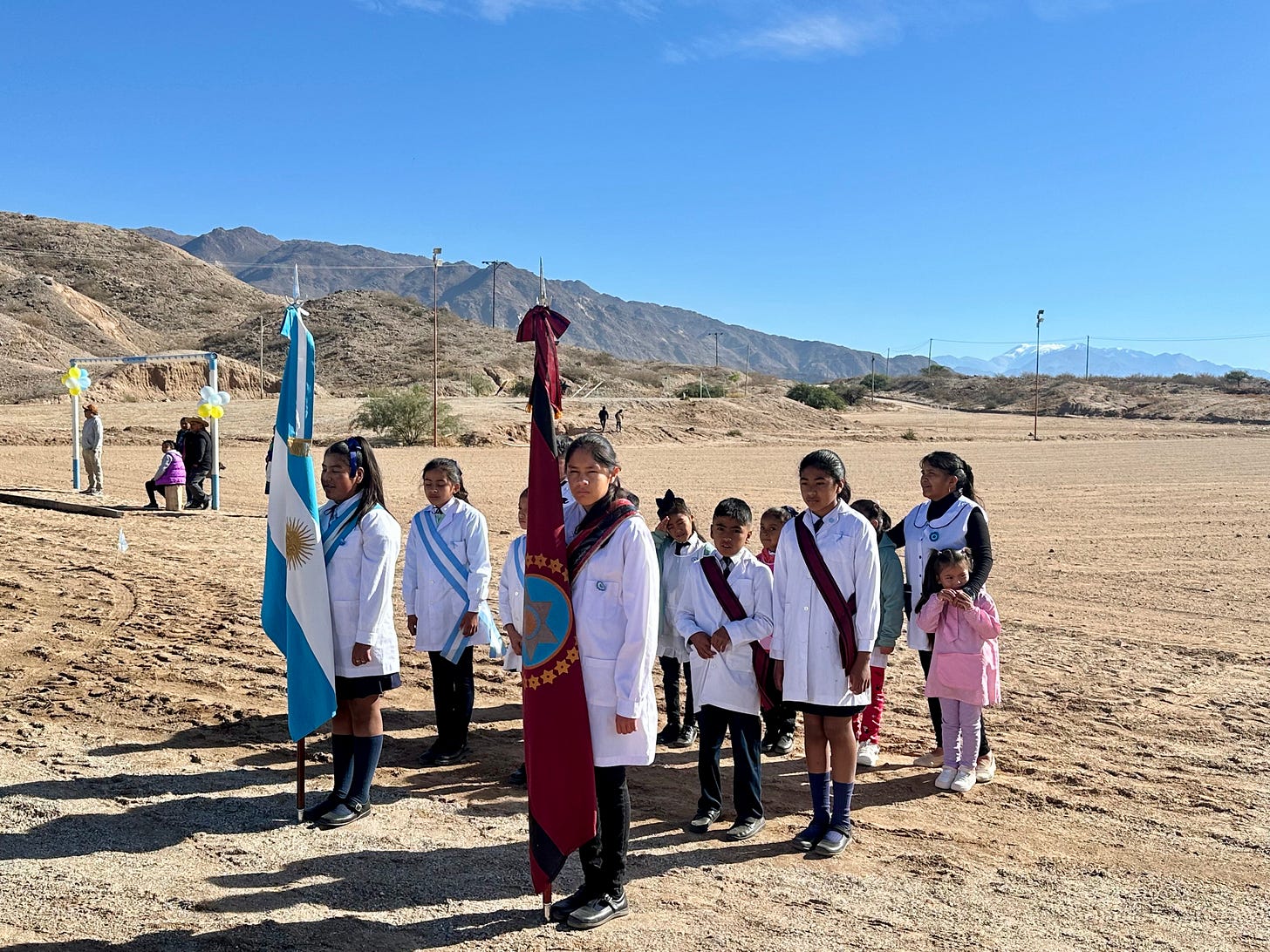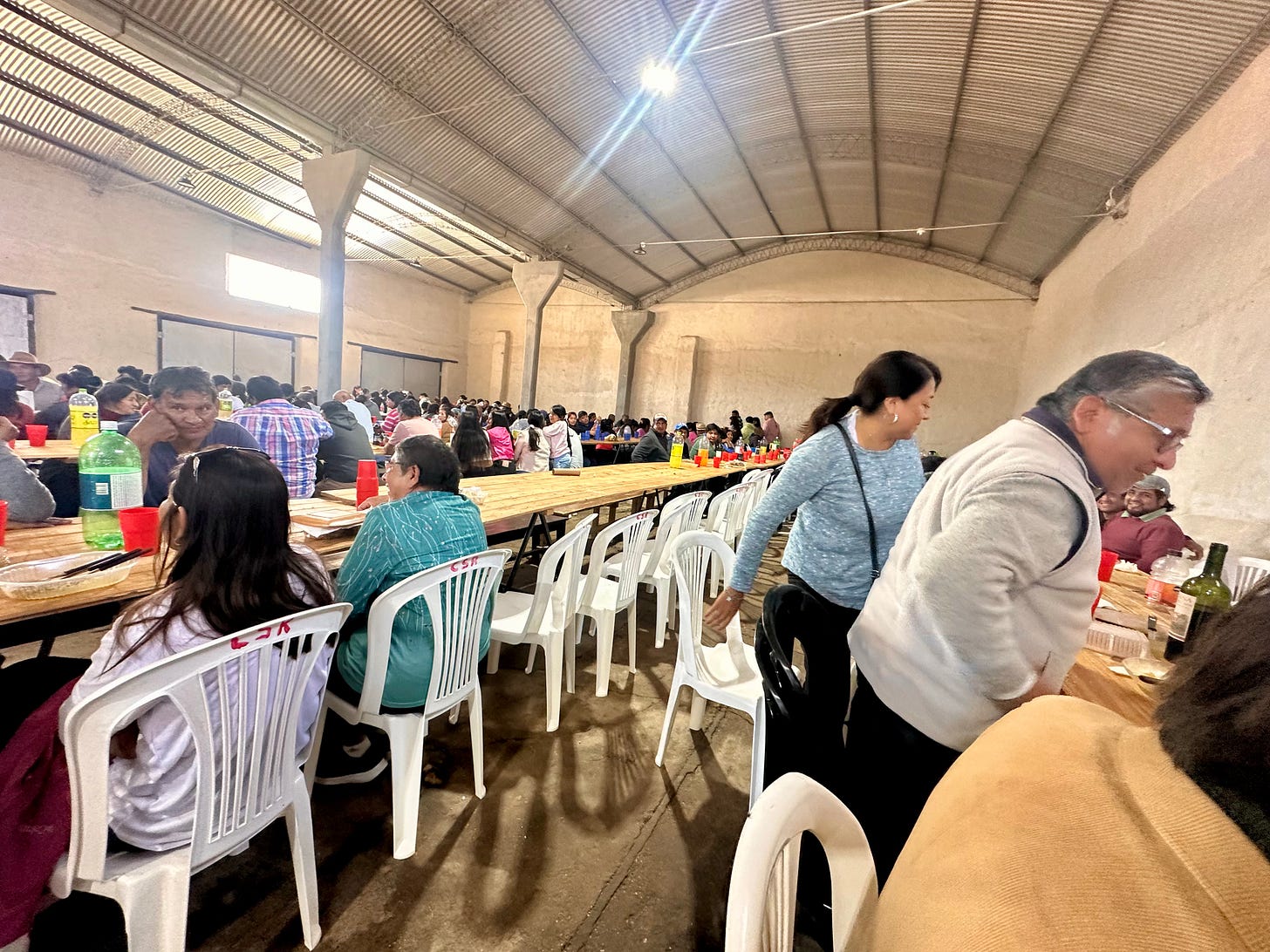Buenos Aires, Argentina
May 27th, 2025
Dear Reader,
Saturday was the feast of Saint Rita, patron of la Arcadia, one of our ranches in the Calchaqui Valley.
Here’s the story of Saint Rita. Her full name was Margherita, which means pearl, and she was born in Umbria, Italy in 1381 to a noble couple.
Rita wanted to become a nun, but her parents married her off at age twelve to a man who turned out to be abusive and unfaithful. She had two sons with him and prayed fervently that he would change his ways and repent. Miraculously, he did.
But because of a family feud, he was murdered. Rita’s sons wanted to avenge his death, but she begged them not to. She prayed that God would prevent them from committing a sin. A year later, they both died of dysentery.
Rita applied to enter the convent of Saint Mary Magdalene in Cascia, but was refused because of her husband’s scandalous reputation, and the fact that she was not a virgin. Still, she persisted and was eventually accepted. There she spent the last of her days until she died on May 22nd 1457 of tuberculosis.
Saint Rita is usually shown with a wound on her forehead and roses at her feet.
The wound refers to a time when she was praying before an image of Jesus on the cross at the age of six. She was so connected with Christ that the wound appeared on her forehead and blood trickled out.
As to the roses, it is said that as she lay dying in the dead of winter, she asked for roses from her hometown to be brought to her. She was told that it was unlikely that there would be any at that time of year. But she insisted, and indeed a few roses were found blooming in her garden at home. Once she received them, she died.
When the big day came around, we went to the chapel at 11am for mass. The benches from the church had been taken outside. A garland of white and blue balloons hung from a tree, and another of yellow and white encircled the image of Saint Rita, poised on a platform in anticipation of her procession.
Our image of Saint Rita.
My mother and I sat down in the second row. Adrien and my dad stood at the back.
The priest, a cheery fellow with cropped grey hair, glasses, and dressed in a white gown, took his place at the altar.
We were invited to join the mayor at the flag pole. The flag hymn was played through loud, crackling speakers as we watched him slowly raise the flag. Adrien stood beside him on the podium while my mother and father and I, the villagers, their families, and friends looked on. Then, the national anthem was played.
Two policemen stood at attention, and two school children, wearing their uniforms under white jackets solemnly held their flags; one for Argentina, and the other for Salta. Other students wore banners with the colors of the Argentine flag, and of the Salteño flag.
The school children. To the left, the Argentine flag. To the right, the flag of Salta.
Then followed the mass and the procession.
Back at the chapel, my father and Adrien each made a short speech. My mother was presented with a hand knitted shawl and bag, along with a ceramic dish with an image of Saint Rita on it.
I invited everyone to join us for lunch in the galpón - the garage.
All the machinery had been cleared out. Long tables and chairs were set up, and the food - potato salad, boiled corn, and grilled beef - was passed around by the workers and villagers in huge plastic tubs.
Lunch in the galpón.
There must have been about four hundred people.
“More.”, said our mechanic, whose wife and son had come especially for the occasion.
The priest said a brief blessing and the meal began.
Afterwards there was to be a soccer game, and a dance.
Once the priest and the government officials had taken their leave, we said our goodbyes.
“See you in a month.”, we said.
“See you next year.”, said my parents.
“Si Dios quiere.”, they replied. God willing.
The next day, we drove to Salta to catch our flight to Buenos Aires. Tonight, we fly to Baltimore.
More to come.
Abrazos,
Mariah
PS: My brother Will tells me he’s ready to ship out last year’s malbec. Unfortunately, there’s less of it than usual. A late frost hit the vines just as the grapes were beginning to grow, leaving us with our lowest harvest in 10 years.
Tacana, our malbec brand, is becoming a legend in the valley, because it is the highest, single-grape vintage in Argentina, and maybe in the world. The elevation makes for the intense flavor, but it comes at a cost – frost. If it comes too early, the grapes are frozen before they are harvested. If too late, the poor grape is ‘nipped in the bud.’
The 2024 bottles – only 600 cases of them – could be collectors’ items. Don’t wait too long to order. Place yours here.







Great article. Brings back memories when I worked for a CPA firm in a Spanish speaking country. Your father has a fine sense of community. Cheers!
That was a wonderful story about Saint Rita, thank you for sharing. It is to bad that your parents can't get down to Argentina more often. Safe travels.